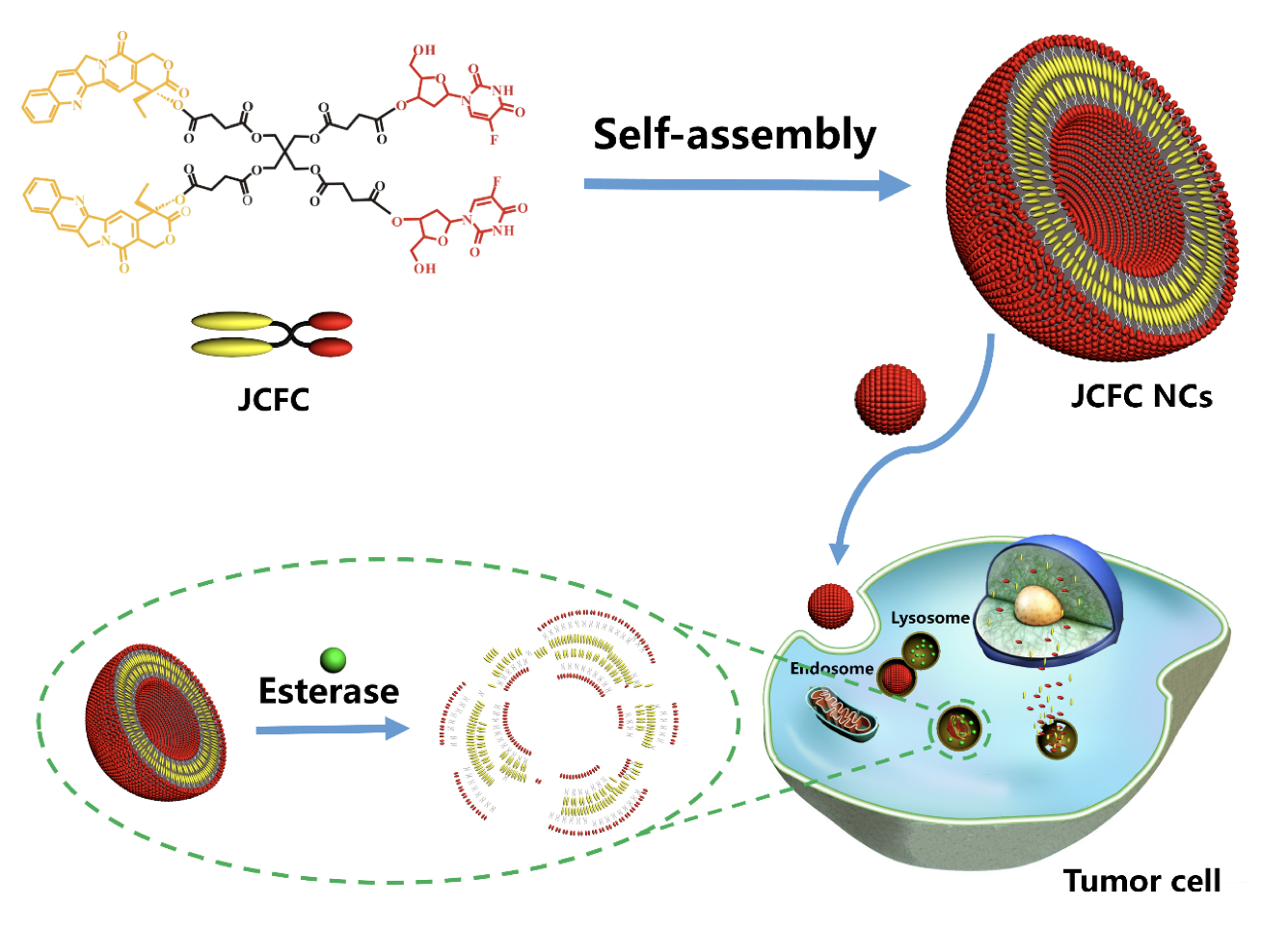In September 2017, Associate Research Fellow Xiaolong Liang and Ph.D Candidate Chuang Gao in our laboratory published literature “Self-Assembly of an Amphiphilic Janus Camptothecin-Floxuridine Conjugate into Liposome-Like Nanocapsules for More Efficacious Combination Chemotherapy in Cancer”on the top academic magazine in the field of materials. For the first time, the amphiphilic Janus drug conjugate (Janus Camptothecin-Floxuridine Conjugate, JCFC) was synthesized then self-assembled into JCFC nanoparticles with high loading content up to 70%. JCFC NPs can effectively prevent drug leakage in the blood circulation. After internalization of the JCFC NCs into tumor cells, both CPT and FUDR (1:1 molar ratio) can be coordinately released owing to the hydrolysis of the ester bond by the esterase and acid environment of tumor cells, resulting in effective tumor growth inhibition. On September 11th, the paper was published online.

Abstract
The combination of camptothecin (CPT) and fluoropyrimidine derivatives acts synergistically at a 1:1 molar ratio. Practically, the greatest challenge is the development of a single liposomal formulation that can both encapsulate and maintain this drug combination at an exact 1:1 ratio to achieve coordinated pharmacokinetics. Consequently, a new type of liposome-like nanocapsule (NC) is developed from a highly symmetric Janus camptothecin–floxuridine conjugate (JCFC) amphiphile, which is synthesized by coupling two hydrophobic CPT molecules and two hydrophilic floxuridine (FUDR) molecules to multivalent pentaerythritol via a hydrolyzable ester linkage. JCFC NCs possess remarkably high drug-loading contents, and no premature release because of the highly stable co-delivery of the drug combination without the need for any carrier. It is shown that JCFC NCs consistently provide synergy and avoid antagonism in a broad panel of tumor cell lines. In vivo delivery of JCFC NCs leads to longer blood retention half-life, higher tumorous accumulation and cellular uptake of drugs, and greatly enhanced efficacy in murine tumor models compared to CPT, FUDR, and CPT + FUDR. This liposomal strategy can be extended to other hydrophilic and hydrophobic anticancer drugs that are coupled to pentaerythritol to self-assemble into nanocapsules for drug self-delivery, pointing to potential clinical translation in near future.
See full text: http://onlinelibrary.wiley.com/doi/10.1002/adma.201703135/epdf